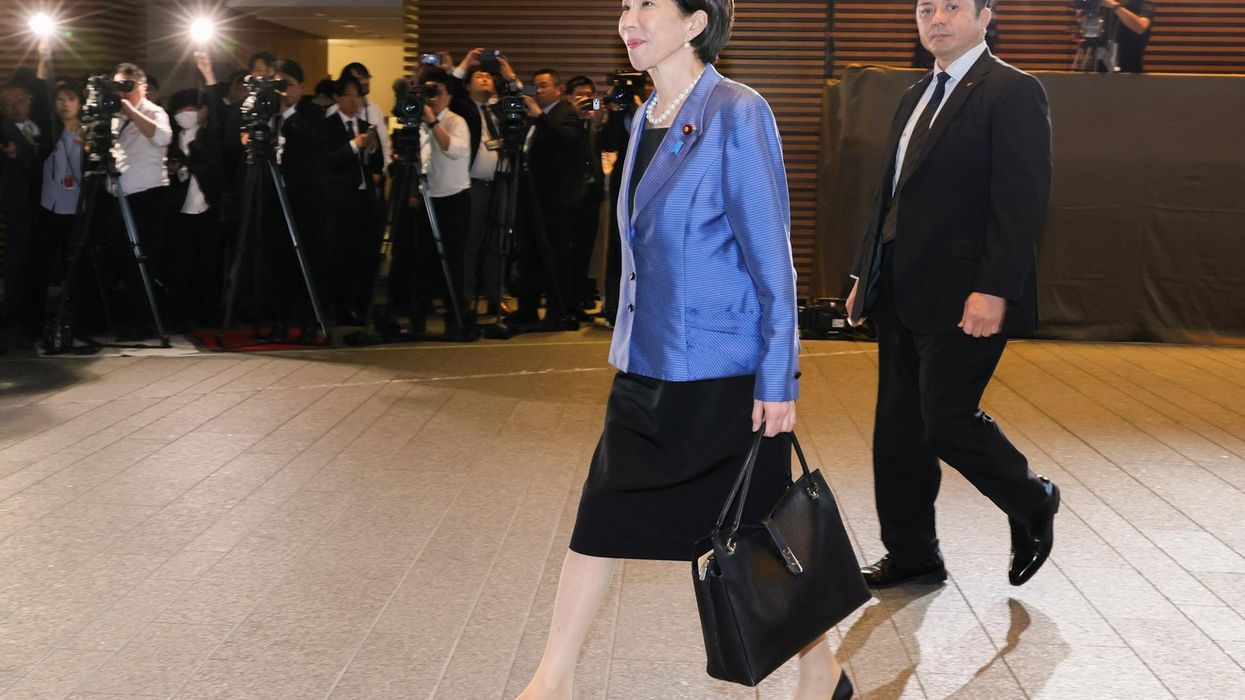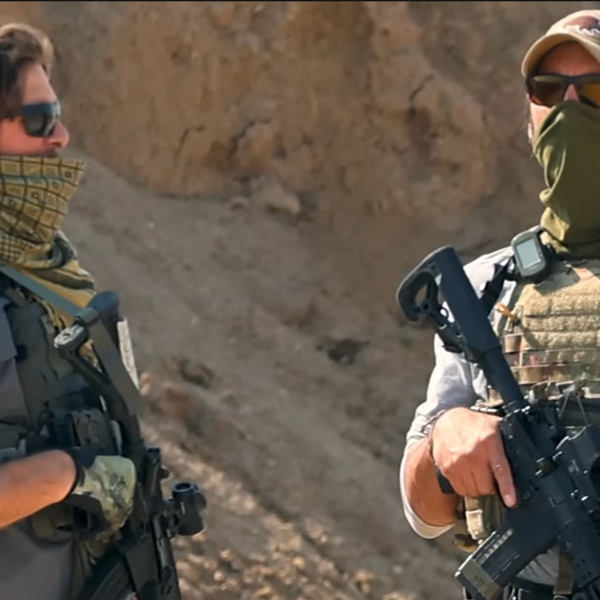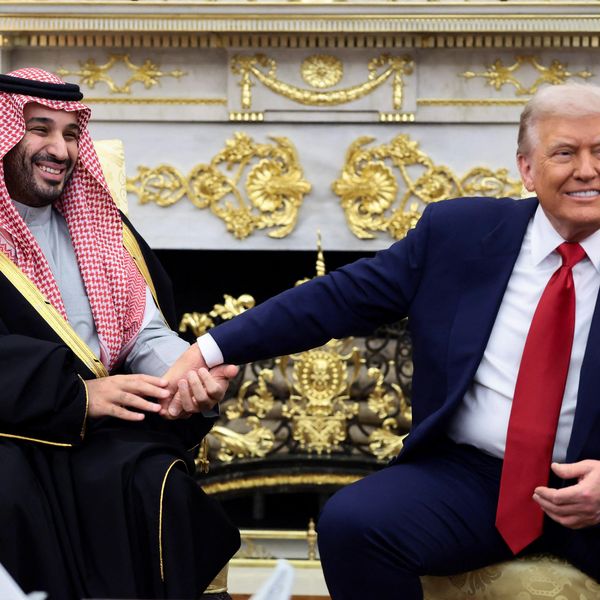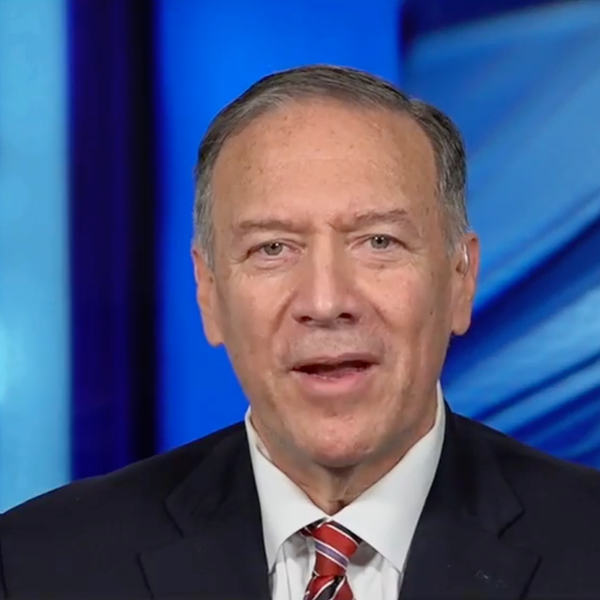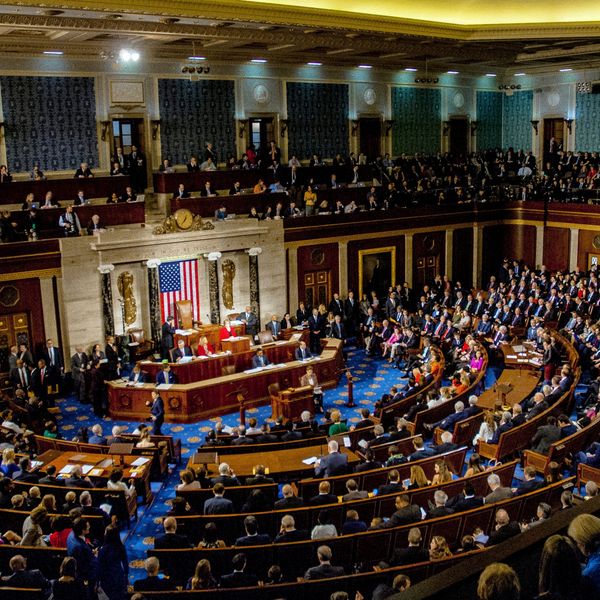The Bunker appears originally at the Project on Government Oversight and is republished here with permission.
Here we go, again
The Pentagon merry-go-round is forever spinning, and eventually — if you’re paying attention — you begin seeing the same things over and over. The Bunker is flashing back 40 years when, as a reporter-tyke, he covered President Ronald Reagan’s efforts to stuff the Defense Department like a goose being force fed for foie gras. Reagan’s effort was foie cash. Two of his key goals were to develop a “Strategic Defense Initiative” to protect the U.S. from a Soviet nuclear-missile attack, and to build a 600-ship Navy.
The Pentagon spent billions on what came to be called Star Wars before the effort was abandoned in 1991. Today, its progeny is a leaky 44-interceptor missile-defense system that provides more defense-industry jobs for American workers than protection for U.S. citizens. The Navy also spent billions on a fleet that peaked at 594 ships in 1987, double today’s force. It bought far more bang for the buck than Star Wars’ sci-fi ever did.
President Trump declared in his March 4 congressional address that he will seek “a state-of-the-art golden dome missile defense shield to protect our homeland” from all kinds of attacks. He also said he’s bolstering U.S. Navy shipbuilding through a newly created “office of shipbuilding in the White House.” There’s both bad and good news here. The first goal is physically, and fiscally, impossible. The second is a worthy investment. Here’s hoping that those now force-feeding the Pentagon can tell the difference.
Beware another pig in a poke
Generally, the Pentagon and defense contractors are allies when it comes to their pipe dreams. But that doesn’t seem to be happening when it comes to Trump’s decision to develop a “Golden Dome for America” (PDF). That’s a missile-defense shield to protect the U.S. from an array of airborne threats, including ballistic, hypersonic, and advanced cruise missiles (it was originally dubbed “Iron Dome” by Trump, apparently until someone realized that’s a trademark held by Rafael, the defense contractor who built the much more modest “Iron Dome” system defending Israel).
Trump wants an outline of such a system, including warning satellites, space-based sensors, and orbiting interceptors, to detect, track, and destroy any incoming aerial threats by, um, April 1.
You don’t have to be a rocket scientist to know such a multi-layered system is beyond the reach of mere mortals. Even if the Pentagon could get its Missile Defense Agency, National Reconnaissance Office, U.S. Space Command and the military services to cooperate, its cost would be prohibitive. Beyond that, the shield would simply push adversaries to figure out ways around it (how quickly we forget the lessons of 9/11).
Air Force Lieutenant General Philip A. Garrant, in charge of buying weapons for the U.S. Space Force, says he’s busy determining “what might be feasible from a physics perspective.” The challenge is “no joke of a physics problem,” adds Air Force Lieutenant General Shawn W. Bratton, the Space Force’s strategy chief.
While such humility is welcome, it’s not shared by the nation’s largest defense contractor, who would undoubtedly play a major role in such dome-building. “A Golden Dome can shield our nation from aerial threats, hypersonic missiles, drone swarms, and more,” Lockheed says. “It can detect, track, and defeat threats with unprecedented speed and precision, using artificial intelligence and real-time data to outmaneuver and outpace even the most sophisticated adversaries.”
This is um, rich coming from the builder of the Air Force’s F-35 fighter, which was mission capable only 51.5% of the time last year.
At least you get something for the money
Trump’s push for more U.S. shipbuilding can only benefit the U.S. Navy. Cost overruns, schedule delays, a shrinking workforce are all hampering the Navy’s ability to produce warships. The gray hulls are the most important weapon in the Pentagon arsenal to grapple with China’s growing military might in the vast Pacific Ocean. China now has the capability to build 200 times more ship tonnage than the U.S., Navy intelligence claims.
While Beijing’s military power is too often exaggerated, the sorry state of U.S. shipbuilding cannot be. The Navy has taken delivery of only four of the 11 Virginia-class attack subs it was supposed to get between 2019 and 2023, and only seven of 15 DDG-51 Arleigh Burke-class destroyers.
“We used to make so many ships,” Trump told Congress. “We don’t make them anymore very much, but we’re going to make them very fast, very soon.” Typical of Trump, there are no details about how this would happen, beyond a vague reference to tax incentives.
The Navy wants to increase its fleet of crewed ships from 295 today to 390 in 2054. That’s going to take more money, and lots of it. The Navy needs about $40 billion annually for the next 30 years to build that armada, 46% more than it has spent over the past five years, the Congressional Budget Office says.
Both missile shields and a blue-water Navy are costly investments. But only one of them can play offense.
Disappearing history
The Defense Department has slated more than 26,000 images on its execrable defense.gov website for deletion because they violate the Pentagon’s DEI-seeking missive banning such content, the Associated Gulf-of-Mexico Press reported March 7. The most ridiculous excision may be to disappear references concerning the Enola Gay, the bomber that dropped the first atomic bomb (the B-29 was named for the pilot’s mother, Enola Gay Tibbets). The Pentagon has acknowledged that such bone-headed moves will likely be reversed.
But not all. A March 6 Facebook post attributed to Bobbie Scholley, a Navy diver for 22 years, said she was researching a fellow pioneer when she ran into a brick wall. “I was saddened, then angered, and finally just heartbroken when I realized that almost all the information and photos of this amazing naval officer have been erased from any official miliary or government site,” it said. “I don’t understand how this falls under DEI. All I know is that as one of the first women to become a navy diver, I and so many other women, had to work very hard to prove that we could handle what was expected of us just so that we were accepted into the community. … I don’t know why we would erase this history.”
Here’s what has caught The Bunker’s eye recently
Air Force aircraft readiness dropped to a new low of 62% in 2024, Stephen Losey reported March 6 in Air Force Times.
→ Downhill slide (PDF)
The U.S. military’s edge over China is jeopardized by “a self-perpetuating cycle of budgetary and appropriations dysfunction,” the Ronald Reagan Institute said March 6.
U.S. B-52s have dropped live bombs for the first time in new NATO member Finland’s Lapland region, about 60 miles from the Russian border, the Barents Observer reported March 7.



